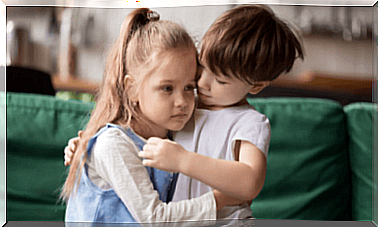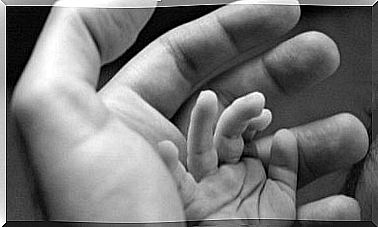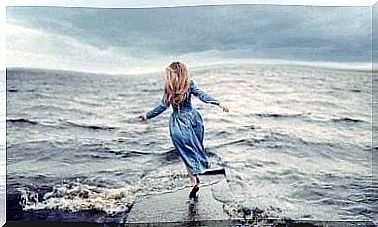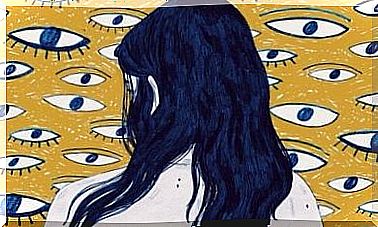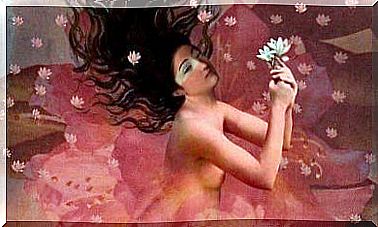Cognitive Development In Children Through Piaget’s Eyes
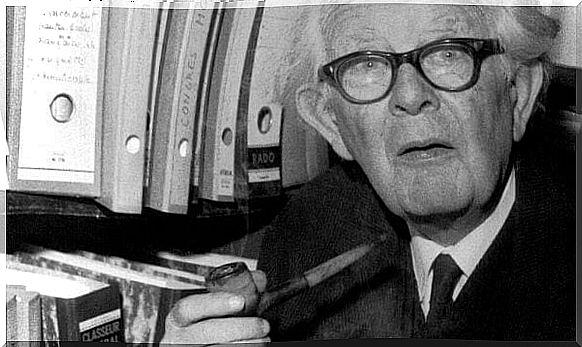
Jean Piaget is a reference point in the study of cognitive development in children. He spent his entire life studying childhood, even with his own children, to unravel the secrets of development. He is also known, along with Lev Vygotsky, as the creator of constructivism.
One of Jean Piaget’s most famous theories concerns cognitive development in children, where he divides the child’s development into four different stages. He made this division in order to find a theory that could explain a baby’s general development.
However, we now know that this leaves too many unevaluated aspects, which means that it cannot be accepted as a theory of general development. But this classification is a useful guide for understanding how we develop our logical-arithmetic ability during childhood.
Many psychologists considered development to be an accumulative phenomenon, creating new behaviors and cognitive processes. After his studies, however, Piaget created a development theory based on qualitative leaps. Here the child accumulated abilities, but sooner or later the accumulation would change his way of thinking qualitatively.
Piaget divided the child’s cognitive development into three stages, with a series of underlying stages. He later completed it by extending it to four. These four stages are: (a) the sensorimotor stage (b) the pre-operational stage, (c) the concrete-operational stage and (d) the formal-operational stage.
This stage occurs before the onset of the language, from birth to around two years of age. This period is characterized by the child’s reflexive ability.
A child’s life in this period is based on relating his perceptual ability to motor skills. In its mind, there are only practical concepts, such as knowing what to do, what to eat or getting attention from the mother.
During this period, the child slowly but surely generalizes events in the surrounding environment and creates ideas about how the world works. When these ideas cross each other, the child develops a perception of the duration of objects and understands that objects exist as entities that it does not know.
Before it develops this idea, everything that the child cannot see, hear or touch counts as non-existent. The end of this stage in such cognitive development in children is characterized by the emergence of language. Language in children means a strong change in their cognitive abilities.
This usually comes with the semiotic function: the ability to represent concepts through thoughts. The child goes from having a completely practical mind to a mind that also works on a representative level.
We can place this stage between the ages of two and seven. Here we are in a transition period where the child begins to work with his semiotic ability. Even though it has already reached a level of representation, its mind is still very different from that of an adult, and this is where we encounter their egocentric aspect.
The child is self-centered because his thinking is completely self-centered. The child cannot distinguish between the physical and the mental or the objective and the subjective.
Its subjective experience is therefore the objective reality that exists in the same way for all individuals. This shows us that something is missing in the theory of the mind. From the age of four, we begin to lose this egocentric approach and develop a theory of mind.

At this stage we also see problems. The child must be able to understand that the universe is changing. He can understand states, but not the transformation of matter. An example of this is when a child at this stage shows a glass filled with water and we pour that water into a narrower but longer glass. The child will think that there is more water than before. He can not understand that conversion does not mean a change in the amount of existing material.
This period includes the ages between 7 and 12. At this stage, the child has managed to leave behind the complete confidence he had in his senses. Here we can see the development of concepts, including how the transformation of the form does not change the quantity itself.
The child begins to construct a logic of classes and relationships that are not connected to perceptual information. The child understands transformations and that they can occur in the opposite direction (for example, adding and removing).
And an important aspect is that it will be able to perform these operations by representing them in its mind without actually having to perform them with actual objects.
Even when it controls operations and logic, it can only perform them with specific objects that it is familiar with. It cannot develop theories about what it does not know or what is outside its perceptual knowledge. The child will gain this ability in the next stage.
This is the last stage of development, where the child grows up on a cognitive level. This stage is characterized by an acquisition of scientific thought, where the child can reason about real things and now also reason about the impossible.

This period is characterized by the ability to form hypotheses and investigate possible consequences of these hypothetical possibilities. The child has refined his test procedures and does not accept opinions without examining them.
The child will begin to acquire new knowledge and intellectual tools that will allow it to develop as a competent adult in society. From here, it will not experience any other cognitive leaps. It may be faster and more accurate with its mental operations, but it will still think the same way.
Now that we are familiar with Piaget’s theory of cognitive development in children, do you think that children actually develop in this way? Or does this theory fail when it comes to explaining human development as a whole?
